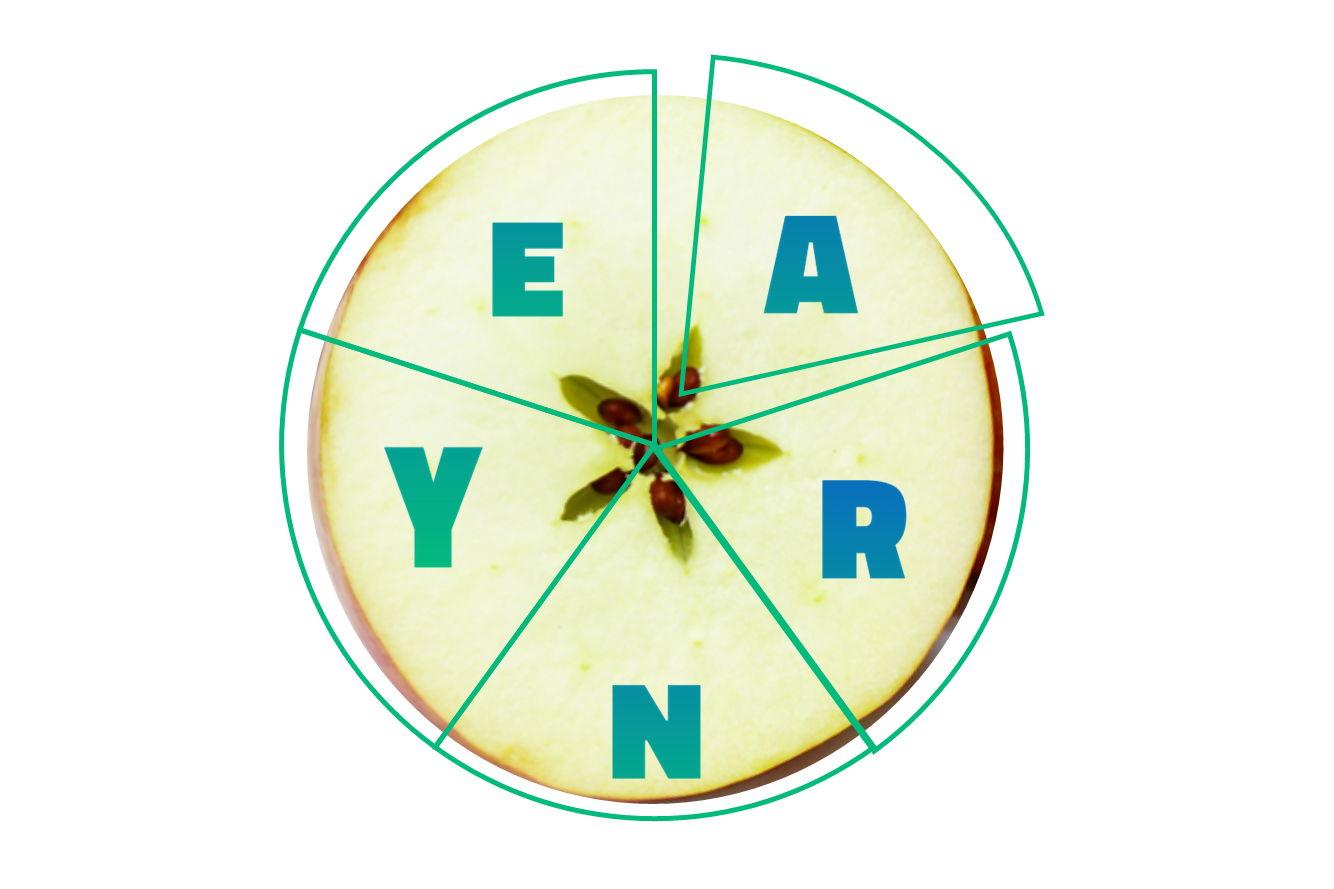Legacy Worthy Number: The Magic of Pi

The Magic of Pi – Why Is Pi A Legacy Worthy Number?
Have you ever wondered why Pi has become such a legacy worthy number? Pi is not only legacy worthy, it is the most iconic irrational number in mathematics, and the significance of Pi is felt across the scientific community. But why is it so legacy worthy? We’ll explore the history of Pi, its impact on science and technology, and why it continues to capture our imaginations.
Pi has been around for thousands of years and was first documented by Ancient Greek mathematicians in 250 BC. It appears in numerous mathematical equations throughout history that have shaped our understanding of geometry, astronomy, engineering, calculus, and even music theory. Despite being an irrational number that can never be calculated exactly, Pi remains one of the most important constants in mathematics today. Not that is legacy worthy!
The enduring importance of Pi lies in its ubiquity across multiple disciplines. Its applications are used to solve some of our greatest challenges — from climate change to space exploration — making it a highly valued number in science and technology. Through a better understanding of Pi’s history and its impact on modern science, we can appreciate its legacy as one of humanity’s greatest accomplishments.
#1 Definition Of Pi
PI is an irrational number with a seemingly infinite decimal expansion, which begins with 3.14159. It is the ratio of a circles circumference to its diameter, and it has been used since antiquity to calculate the area of a circle. Its exact value cannot be calculated and therefore it has become an enduring mystery in mathematics.
The symbol for pi, π, was first used in 1706 by William Jones, though it had been known as “p” or “b” before that. Since then, pi has become one of the most important numbers in mathematics and science, used to measure circles and spheres, calculate trigonometric functions, and even help calculate gravitational waves.
Pi is also a culturally significant number, appearing in literature and art throughout history. It appears in religious texts such as the Bible and Hindu Vedas, as well as popular culture such as Star Trek and The Simpsons. As such, it has become a symbol of timelessness and universality – a legacy worthy number that will continue to inspire generations to come. #legacyworthy
#2 Historical Significance
Now that we know what Pi is, it’s time to explore why it is such a legacy worthy number. The historical significance of Pi has been acknowledged since ancient times. It was first discovered by the Babylonians in 2000 BC and used to calculate the area of circles. Later, it was used by the Egyptians in 1650 BC to measure the area of fields. In more recent history, mathematicians such as Archimedes, Isaac Newton and Leonhard Euler worked on Pi and its properties.
Pi also played an important role in astronomy as early as 140 AD when Claudius Ptolemy used it to calculate the circumference of the earth. This calculation is still being used today in satellites and other forms of navigation.
In addition, Pi has many interesting properties that have captivated mathematicians for centuries. It is an irrational number with an infinite decimal expansion and has no pattern or repetition; which means it can never be calculated exactly. This element of mystery surrounding Pi makes it a timelessly fascinating concept worth exploring for generations to come. #legacyworthy
Note: 2015 was the once-in-a-lifetime century event for Pi Day. We will we experience 3/14/15 9:26:53 and this happened 100 years previously. 3/14/15 9:26:53 is pi to ten places!
#3 Mathematical Properties
Pi is an incredibly versatile number, and its mathematical properties are what make it so special. It’s an irrational number, which means it can’t be expressed as a fraction or decimal; instead, it goes on forever without repeating itself. This makes pi especially useful for calculations that require precision. For example, you need to know pi to calculate the circumference of a circle.
The ratio of a circle’s circumference to its diameter is also always equal to pi. This property makes it more useful in many other situations where circles come up, such as calculating the area of a circle or when constructing any kind of wheel-shaped device.
Finally, pi has been used for centuries in all sorts of mathematical equations and calculations, making it an incredibly versatile tool. There’s no other number quite like pi; its legacy has stood the test of time and continues to be used today in all sorts of applications.

#legacyworthy PI
#4 Universal Application
Pi is a legacy worthy number due to its universal application. It is used across many disciplines, from mathematics and physics to music and art. As an irrational number, pi has the ability to transcend its mathematical origins and become an integral part of almost any field of study.
In mathematics, pi is used as the ratio of a circle’s circumference to its diameter. The numerical value of pi has been determined with increasingly higher accuracy over the centuries, offering mathematicians a valuable tool for solving problems related to circles and other curved shapes. The concept of pi is also used in calculus, trigonometry and geometry, making it an essential component of modern mathematics.
In physics, pi appears in equations that describe various aspects of motion and energy. For example, scientists use pi when calculating the tension in a uniformly distributed string or the resonance frequency of a sound wave in an enclosed space. The constant also appears frequently in formulas related to waves and oscillations. Furthermore, physicists often use pi in their calculations related to gravity and planetary orbits.
The legacy of pi extends far beyond mathematics and physics. Its numerical value can be found in musical theory, where it describes musical intervals such as fifths or octaves; as well as architecture, where it is used when designing domes or arches; or even art where it is sometimes employed as a rule for composition. There’s no doubt that this unique number has had an immense impact on our culture, making it more than worthy of being considered a timeless classic within the scientific world.
#5 Circumference Of A Circle
Pi, or the mathematical constant represented by the Greek letter π, has been a topic of fascination for thousands of years. It is an irrational number that can not be expressed as a fraction and it continues infinitely without repetition. Its legacy lies in its importance to geometry and mathematics as a whole.
The most famous application of pi is in relation to circles. The circumference of any circle is equal to 2π multiplied by its radius. This means that if we know the radius of any circle, we can use pi to find its circumference. Therefore, pi is essential to solving problems related to measuring circles and calculating their area.
Given the ubiquitous presence of circles both in nature and in man-made objects, pi has become an invaluable tool for mathematicians and engineers alike. In addition, many scientific models rely on calculations involving pi, including theories related to gravity, light propagation, and fluid dynamics. Without pi’s unique properties these models would be impossible to construct. Without question, pi is an integral part of mathematics and science that will remain relevant for many years to come. #legacyworthy
#6 Areas of Shapes and Solids
Now that we have discussed the circumference of a circle and the importance of pi, let’s move on to another application of pi – areas of shapes and solids.
The area of a shape is found by multiplying the length and width, then multiplying that result by pi. The most common example for this is finding the area of a circle. To find it, you use the formula A = πr2, where ‘A’ stands for area, ‘π’ stands for pi, and ‘r’ stands for radius. This equation can also be used to calculate the area of other curved shapes such as ellipses or sectors.
In addition to calculating areas, pi can also be used to calculate volumes. This is done by using another formula called the volume formula. It states V = (4/3)πr3 where ‘V’ stands for volume and ‘r’ stands for radius. Using this formula allows us to calculate volumes of various regular and irregular shapes such as cones, spheres, pyramids and cylinders.
These calculations are incredibly useful in engineering fields where they help to create accurate models and designs. Pi has proven itself time again as an important mathematical constant that helps us understand various aspects of geometry and physics which makes it a legacy worthy number indeed!
#7 Trigonometry & Geometry
Pi has been a part of mathematics for centuries, and its legacy has endured through the development of trigonometry and geometry. It is an irrational number, meaning its decimal representation never ends or repeats itself. As a result, it can be used to calculate the circumference of any circle by multiplying its diameter by pi, which is why it’s so important in trigonometry and geometry.
Trigonometry is the study of triangles, particularly their sides and angles. Pi plays an essential role in finding the area or circumference of any circle because it can be used to determine how far around the circle’s perimeter is. In addition, pi is also used to calculate angles between two points on a circle or arc, as well as how far along the circumference they are from one another.
In geometry, pi is often used to find the area of polygons such as circles and rectangles. This is because the formula for calculating this area requires knowledge of pi’s value. Additionally, pi helps us understand phenomena such as light refraction and reflection when understanding geometric shapes like spheres and cones.
For these reasons, pi has earned its place in mathematics as a legacy worthy number that continues to have applications in many areas today.
#8 Wave Lengths and Vibrations
Moving on from the study of trigonometry and geometry, we will now explore wave lengths and vibrations. Wave lengths are the distance between two points of a particular wave, while vibrations are the oscillatory motions or movements of the wave. Both of these concepts are incredibly important when discussing pi, as pi can be used to calculate the circumference of a circle and wave length.
The formula for calculating wavelength is equal to the speed of light divided by frequency, or c/f. This equation can be applied to any wave, including sound waves. Since pi is known to be an irrational number with an infinite number of digits following 3.14159…, it can be used in this equation to calculate an extremely precise wave length measurement. For example, if someone wanted to measure a frequency that was extremely close to another frequency, they could use pi in their equation instead of using two separate numbers. This means that Pi has become one of the most important constants in measuring waves and vibrations precisely.
In addition to its mathematical uses, Pi also has symbolic significance in many cultures around the world. The ancient Greeks believed that this constant was connected to nature and existence itself. Today Pi continues to have spiritual significance for many people who recognize its importance as an integral part of our universe’s mathematical structure. It is considered one of the most essential components in understanding mathematics and physics due to its seemingly endless sequence of digits, which makes it capable of being used for all sorts of calculations related to waves and vibrations. Because Pi has such a wide variety of uses and carries so much meaning within many different cultures around the world, it truly is a legacy worthy number that deserves recognition for all its contributions throughout history.
#9 Statistics & Probability
Pi is a legacy worthy number because of its unique properties and applications in the field of statistics and probability. It is an irrational number, meaning that it can’t be expressed as a fraction or written as a simple decimal. This makes it useful for calculating probabilities and generating random numbers. Pi also has an infinite number of digits, which allows for very precise calculations with mathematical precision. Furthermore, pi’s wide range of uses in fields like engineering, astronomy and physics make it invaluable to many disciplines.
In statistics and probability theory, pi is used to calculate the area under the normal curve which describes the spread of data points around the mean value. This type of calculation is necessary for hypothesis testing, estimation of confidence intervals and other types of statistical analysis. Similarly, pi can be used to generate random numbers when conducting simulations in order to study various combinations or scenarios.
Due to its numerous applications in mathematics and science, pi has earned its place among some of the most important constants in history. Its versatility makes it a powerful tool for problem-solving and analysis across multiple disciplines, from engineering to biology. As such, it continues to be valued today as an irreplaceable part of our scientific knowledge base. #legacyworthy
#10 Quantum Mechanics & Chaos Theory
The discussion of Statistics & Probability has brought us to the realm of Quantum Mechanics & Chaos Theory. As we explore this area of knowledge, it becomes clear why pi is such a legacy worthy number.
Quantum Mechanics and Chaos Theory are based on uncertainty and unpredictability. They deal with phenomena that cannot be explained by traditional methods or laws. Pi is a symbol for this unpredictability, as it is an irrational number that has no exact pattern or formula for calculating it. It can only be approximated, which makes its value unique and remarkable.
In addition to its unique value, pi also has connections to other areas of mathematics and physics, such as geometry and circles. This connection illustrates how the complexity of pi can help us understand the complexities of quantum mechanics and chaos theory. By studying pi, we can learn more about these sciences and their applications in our world.
Pi’s legacy lies in its ability to bridge the gap between mathematics, physics, and chaos theory; it serves as a reminder that even in times of uncertainty, there are answers waiting to be discovered through exploration and investigation. With its intriguing properties, pi continues to captivate scientists all over the world who strive to unlock its secrets.
#11 Number Theory & Prime Numbers
Pi is a legacy worthy number because it has been studied for centuries and is linked to some of the most fundamental mathematical questions. It’s an irrational number that never ends and never repeats, making it essential to the study of number theory. Pi is also closely connected to prime numbers, which are integers that can only be divided by themselves and one. A result known as Euclid’s theorem states that all prime numbers can be written using a formula involving pi.
In addition, the digits of pi have been used to prove some important mathematical results, such as the irrationality of some other numbers like e or the square root of two. Furthermore, pi plays an important role in calculus since its derivatives are found in many areas. In particular, it plays a key role in integral calculus since its integrals appear in almost every branch of mathematics.
Pi’s importance in mathematics continues to this day, with scientists still studying its properties and applications to better understand our universe. Its legacy as one of mathematics’ most beloved constants will undoubtedly remain long after we’re gone.
#12 Irrationality
Pi’s irrationality is one of the most notable aspects of its legacy. It’s a number that cannot be expressed as a fraction, and it never ends or repeats itself. This means that whenever pi is written out, there will always be new digits to explore. Its infinite nature has made it an important symbol throughout history and across cultures, representing mystery and eternity.
The discovery of its irrationality was also incredibly significant to mathematicians. Before this discovery, it was believed that all numbers could be represented as fractions – pi shattered this idea and marked a turning point in mathematics. Its irrationality gave way to the exploration of more complex mathematical concepts such as calculus and topology.
Today, pi continues to be studied by mathematicians around the world who are looking for patterns in its digits or attempting to calculate it further. It’s an enduring symbol of the mysteries of mathematics, inspiring generations of scientists and thinkers to continue discovering the unknown. #legacyworthy
#13 Digits & Decimals
Pi is an extraordinary number. Its decimal representation, 3.14159…, goes on infinitely without repeating or exhibiting any pattern whatsoever. This makes it unique among all other irrational numbers, which can be expressed as fractions and have a finite decimal expansion.
Moreover, pi has been around since ancient times, with its use first documented in the Rhind Papyrus from 1650 BCE. Over the centuries, mathematicians have continued to explore its properties and improve upon methods of calculating it to greater and greater accuracy. In modern times, computers can calculate up to millions of digits of pi, yet the exact value remains unknown due to its infinite nature.
This legacy has resulted in Pi becoming something of a cultural icon; celebrated annually on March 14th (3/14) and featured in books, films and artwork across the world. It’s also used in many diverse fields such as architecture, engineering and quantum mechanics – serving as testament to its significance throughout history. All these factors make pi an undeniably legacy worthy number.
#14 Computer Programming
Pi is a legacy worthy number because of its prevalence in computer programming. It is used in many programming languages, from C++ to Python, to represent the ratio of a circle’s circumference to its diameter. This makes it an invaluable tool for computing the area and circumference of circles. It’s also used in trigonometry, which helps programmers calculate angles, distances and other functions related to shapes.
In addition, pi appears in computational geometry algorithms like the Graham scan. These algorithms are used by computers to solve problems such as calculating the convex hull or determining if two lines intersect each other. Pi is also important for 3D graphics, as it allows computers to render images with more realistic lighting and shading effects.
Overall, pi has become an integral part of computer programming due to its usefulness in solving complex mathematical problems. Its importance will continue to live on in the world of computer science for generations to come.
#15 Cultural Representation
Moving away from computer programming, the legacy of pi is found in its cultural representation. Pi has become an iconic figure in pop culture, appearing in books, movies, and even music. It has been featured prominently in high-profile works of art and literature, such as Dan Brown’s novel Angels & Demons. This widespread recognition demonstrates how firmly embedded pi is in our culture and its impact on how we view mathematics.
The ubiquity of pi has made it a powerful symbol for many people around the world. In some parts of the world, students celebrate “Pi Day” on March 14th (3/14) to mark the number’s importance. Pi is also used by teachers to introduce math concepts to their students and has inspired math competitions across the globe.
Beyond its educational value, pi serves as a source of inspiration for mathematicians who are striving to uncover new truths about this enigmatic number. Even after centuries of exploration and study, pi remains one of the greatest unsolved mysteries in mathematics that continues to challenge experts to this day. Its mystery will likely endure for generations to come, making it a legacy worthy number indeed.
#16 Pi Day March 14 is 3.14
March 14th, which represents the first three digits of pi (3.14) is the day of the annual Pi Day celebration. March 14th (3/14 in the month/day date format), which represents the first three digits of the mathematical constant π (pi). Pi is the ratio of the circumference of a circle to its diameter, and its value is approximately 3.14159.
Pi Day is celebrated by mathematicians, science enthusiasts, and educators around the world through various activities and events such as reciting pi digits, baking and sharing pi-themed pies, and organizing educational programs to teach the significance of pi in mathematics and real-world applications.
Pi Day was first organized by Larry Shaw, a physicist at the Exploratorium in San Francisco, in 1988, where Shaw and his colleagues marched around a circular space while eating fruit pies. Since then, Pi Day has grown in popularity and has been celebrated in schools, universities, museums, and science centers worldwide.
There are many ways to celebrate Pi Day, such as:
- Reciting the digits of pi: Some people challenge themselves to memorize and recite as many digits of pi as possible. The current world record for memorizing pi is held by Rajveer Meena, who memorized and recited 70,000 digits of pi in 2015.
- Baking and sharing pi-themed pies: Many people bake and share pies that are decorated with pi symbols, digits of pi, or mathematical equations.
- Organizing educational programs: Schools, universities, and science centers often organize educational programs to teach the significance of pi in mathematics and real-world applications.
- Participating in math contests and challenges: Some organizations and websites host math contests and challenges on Pi Day, such as puzzles and quizzes related to pi.
Pi Day is an excellent opportunity to celebrate mathematics and its importance in everyday life. It encourages people to explore the beauty and complexity of mathematics and its applications in fields such as science, engineering, and technology.

The Magic of Pi
PI is an incredibly important number that deserves its legacy. Its historical significance and cultural representation make it something to be treasured. The mathematical properties of pi have been studied for centuries, and its universal application in mathematics, science, computer programming and more has made it an essential part of the scientific community. Its irrationality has fascinated mathematicians since ancient times and its importance in measuring the circumference of a circle can never be understated. Pi will continue to hold a special place in our hearts as one of the most significant numbers of all time. I’m sure that if you asked anyone what pi was, they’d be able to tell you – that’s how important it is!
#legacyworthy #pi #piday



